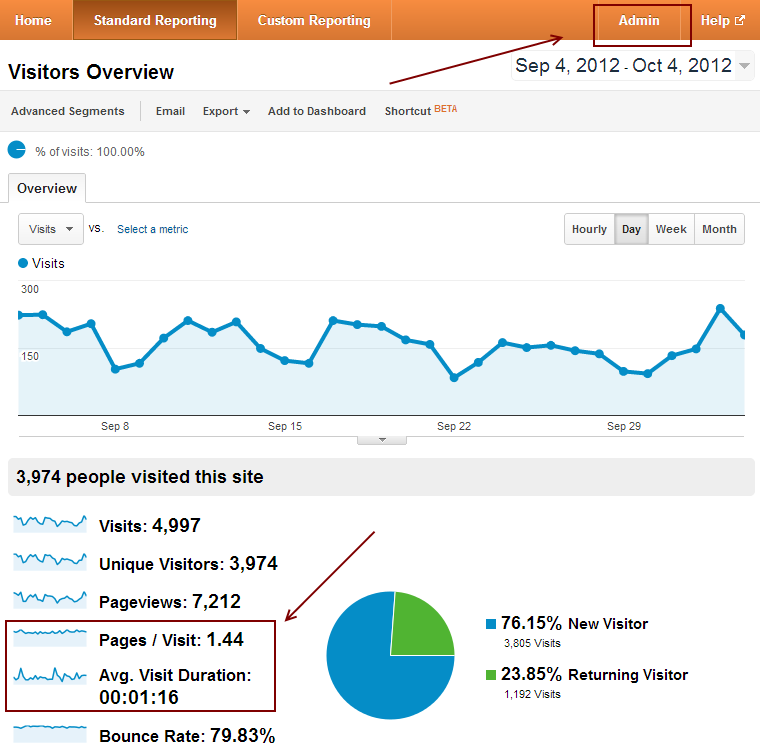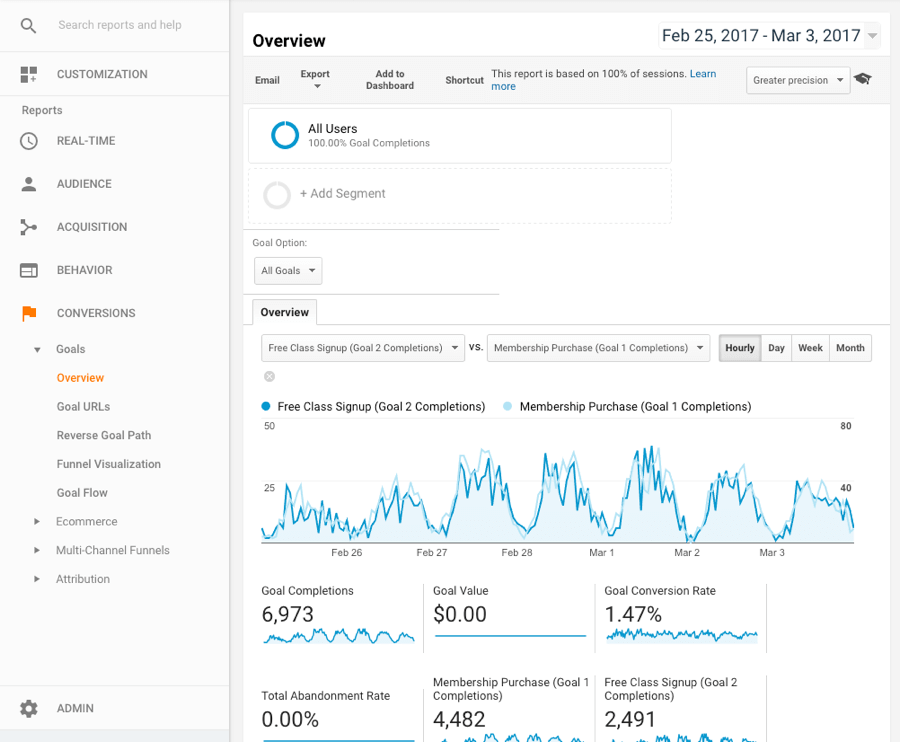Understanding What Data Is Google Analytics Goals Unable to Track
Understanding What Data Is Google Analytics Goals Unable to Track
Blog Article
Debunking Google Analytics Limitations: Uncover What Data Goals Can not Track
In the world of electronic analytics, Google Analytics stands as an effective device that offers beneficial understandings into site performance and user actions. Nevertheless, amidst its capacities, there exist limitations that often go undetected. Recognizing what Google Analytics can not track is vital for a comprehensive understanding of information interpretation and decision-making processes. From the ins and outs of individual interaction with vibrant web content to the complexities of cross-device customer trips, these restrictions lost light on areas that might stay obscured from standard analytics point of views. By untangling these restraints, a clearer picture arises, permitting for more informed methods and refined understandings into customer interaction and conversions.

Customer Interaction With Dynamic Content
Customer interaction with dynamic web content plays an essential duty in comprehending customer behavior on sites and maximizing the overall individual experience. Dynamic web content refers to elements on a web page that can transform without the demand for a full page reload. This consists of interactive components such as pop-ups, sliders, kinds, and videos that react to user actions in real-time. By tracking individual interactions with vibrant content, site proprietors can obtain useful understandings into user engagement, preferences, and habits.
Google Analytics supplies numerous devices to track individual communications with vibrant material, such as event tracking and digital pageviews. Event tracking permits you to keep track of particular user actions, like clicking a button or viewing a video, giving information on just how users connect with vibrant aspects. Virtual pageviews can be made use of to track interactions that do not bring about a brand-new web page load, providing a detailed sight of individual engagement with vibrant material. By examining this data, site proprietors can make educated decisions to enhance individual experience and drive conversions.
Cross-Device Individual Journeys
How can modern analytics tools track the facility paths customers take across multiple devices in their on-line trips? Cross-device individual trips present a significant difficulty for monitoring and examining user habits properly. As individuals interact with apps or web sites utilizing numerous devices such as desktops, tablet computers, and mobile phones, it comes to be important to recognize just how they move in between these systems to maximize user experience efficiently.
Google Analytics faces restrictions in tracking cross-device individual journeys due to personal privacy concerns and technical constraints - what data is google analytics goals unable to track. While it can provide insights right into individual gadgets' interactions, tracking a seamless customer trip throughout numerous tools remains a challenge. This constraint can cause incomplete data and fragmented customer understandings, making it tough for services to create a unified view of the customer journey
To resolve this problem, companies can make use of innovative analytics tools that offer cross-device monitoring capacities, allowing them to obtain a more all natural understanding of customer habits. By leveraging these tools, organizations can link the space in tracking cross-device user trips and enhance their digital approaches for a smooth user experience.
Offline Conversions and Attribution
As organizations browse the difficulties of tracking cross-device user trips, another essential aspect to think about is the realm of offline conversions and attribution in the world of information analytics. While Google Analytics offers important understandings into online customer habits, it fails when it involves tracking conversions that happen offline. This restriction postures her latest blog a significant obstacle for services that have both online and offline sales channels.
Offline conversions, such as acquisitions made in physical stores or via phone call facilities, are important to comprehending the complete client trip. Without the capability to connect these offline conversions to certain on-line interactions, organizations may battle to accurately determine the impact of their digital marketing efforts.
To resolve this space, businesses can check out alternative remedies such as incorporating CRM systems with on the internet analytics devices or using distinct coupon codes that can be mapped back to on-line campaigns. By linking the space in between online and offline data, services can acquire a more thorough understanding of their customers' actions and enhance their overall advertising and marketing methods.
Person Customer Identification
In the world of information analytics, the capacity to properly identify specific users across numerous on-line touchpoints is a crucial obstacle for businesses seeking to customize and optimize their advertising and marketing techniques. While Google Analytics provides useful insights right into user habits and communications, it falls brief in allowing the identification of certain individuals due to privacy concerns and technical constraints. Google Analytics makes use of unique identifiers such as cookies find more info to track individual sessions and habits, but these do not relate to identifying individual customers in a personal sense.

Data From Secure Pages
In spite of the enhancing frequency of protected web pages on sites, getting data from these encrypted resources presents a special challenge for electronic analytics systems like Google Analytics. Protect web pages, indicated by HTTPS in the link, encrypt data traded between the individual's internet browser and the site's web server to guarantee personal privacy and safety. While this security is crucial for protecting sensitive details, it also presents limitations for tracking individual actions and gathering analytics data.
Google Analytics encounters barriers in collecting in-depth details from secure pages as a result of the encryption procedures in place. Because of this, This Site particular information points such as reference sources, keyword searches, and even some customer interactions may not be totally captured when individuals access an internet site with a safe and secure link. This limitation can influence the precision and completeness of the data analysis, causing voids in understanding user habits and preferences on safe web pages.
To browse this obstacle, digital analysts might require to explore alternative tracking techniques or take advantage of various other tools particularly developed to gather understandings from secure web pages. By adjusting approaches to suit these constraints, organizations can still acquire useful analytics in spite of the restrictions provided by encrypted connections.
Conclusion
In verdict, Google Analytics has limitations in tracking customer communication with dynamic content, cross-device user trips, offline conversions, specific user identification, and information from safe pages. These restrictions prevent a comprehensive understanding of customer actions and may lead to gaps in data evaluation. Regardless of its useful understandings, Google Analytics might not supply a full photo of individual interaction throughout numerous touchpoints. It is important for services to be knowledgeable about these constraints and take into consideration additional devices for an extra all natural view of their data.
Individual communication with dynamic content plays a vital role in recognizing user actions on websites and enhancing the total individual experience. By tracking customer interactions with vibrant content, website owners can obtain important insights right into individual interaction, choices, and actions.
Google Analytics makes use of distinct identifiers such as cookies to track individual sessions and actions, but these do not equate to determining specific customers in a personal sense.
As a result, particular information points such as referral sources, keyword searches, and even some individual communications might not be totally captured when users access a website through a protected connection.In final thought, Google Analytics has constraints in tracking customer communication with vibrant web content, cross-device user journeys, offline conversions, individual user identification, and data from protected pages.
Report this page